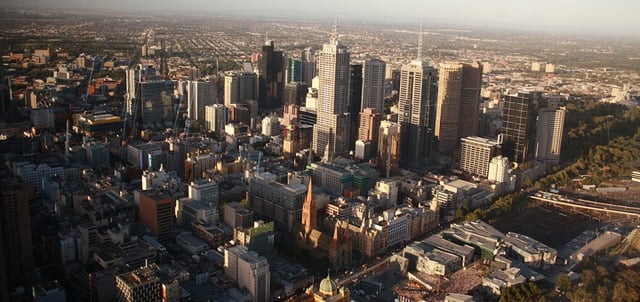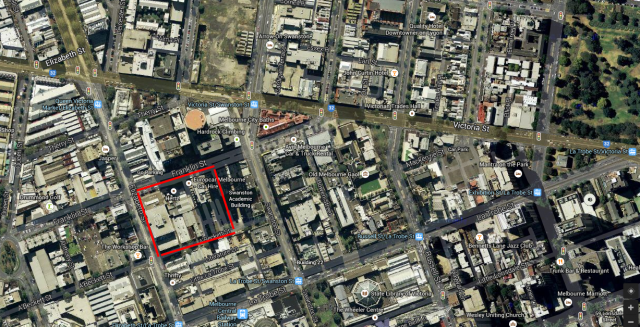Recently The Age and various news outlets reported on a study done last year as part of a Churchill Fellowship by a Melbourne City Council staffer. The report was promoted in the television media as “Melbourne’s population density higher than Hong Kong”, and some other cities. Here is a link to The Age article.
This seemed a bit odd to me, as conventional wisdom would have it that Hong Kong is one of the most densely populated cities on Earth.
So I looked a bit further.
The headline in The Age shows Melbourne population densities at 6,290 residents per hectare, or 8,600 people in a city block, compared to just 2,620 residents per block in Hong Kong.

Hong Kong’s skyline – by Mike Behnken (Flickr)

Melbourne CBD’s skyline – by Anne Beaumont (Flickr)
The key here is that the study is looking at just one block in the city – not an average across the whole city. That block is just north of the CBD, bounded by Elizabeth Street, A’Beckett St, Franklin St, and Stewart St. In fact it’s not even a full city block by that definition, as Stewart St is just a little laneway. This is a very high population density. But drawing a similarity to Hong Kong on the basis of a half-block is drawing a long bow.

The city block under study, with a high projected population density.
You can make population density look as high as you like, just by drawing the boundaries smaller. A high-rise block may have enormous population density, but that’s considered in isolation. Population density is also affected by open space, commercial and industrial land, and the amount of space devoted to transport (roads, railways etc.). People don’t live their whole lives on a city block.
That particular block is just a short walk from two of the largest open spaces in the inner city – Flagstaff Gardens and Carlton Gardens.
When you factor in all the open space and non-residential space in the City of Melbourne, the total population density of the City of Melbourne comes to a grand total of 31 people per hectare. Or around 1/300th of the level quoted in the article. And this is one of the densest parts of the metropolitan area (the City of Port Phillip is actually the densest, at 50 people per hectare (2013)).
Averaged across the entire metropolitan area of Melbourne, average population density is a grand 4.4 people per hectare. Yes, 44 – a 2-digit number. Ok this is a bit disingenuous too, because the Greater Melbourne Statistical Area now includes large areas of state forest, national park and rural districts. But even averaged over the inner suburbs only, it’s just 21 people per hectare. The fact is that Melbourne (and all Australian cities) is among the least dense cities in the world.
Source for all these figures is ABS 3218.0 – Regional Population Growth, Australia, 2013
And yet when you consider smaller areas, it’s all about how you draw the boundary. If it’s tightly around a residential place, this will result in a relatively high density. Even drawing a tight boundary around my (very much low density single storey suburban!) house, I can still manage to arrive at a population density of around 250 people per hectare.
Please note here that I’m not saying there is anything wrong with The Age article. It does clearly state that it’s looking at a block only. But the headline of very high population density is easy to get the wrong end of! Nor does the original report claim to be representing density for the whole city. It’s quite clear that it’s looking at a city block, and the planning controls which apply to it. But it is easy to pick up on a headline like this fuel residents fears about high-rise in their backyards, and “Melbourne is denser than Hong Kong” is a good sound bite.
And it’s just not true. According to Wikipedia, Hong Kong’s average population density is 63 people per hectare averaged over the entire district (remember this is equivalent to the figure of 4.4 for Greater Melbourne, above, and even the inner suburbs total is one third of this value), with 5,700 being the highest density in the most heavily populated districts of the city.
So no, Melbourne is not denser than Hong Kong – not even remotely close. The odd city block around the CBD, here and there, may approach Hong Kong levels.
The original purpose of the study was to generate a discussion on planning controls in the inner city, and provision of services by developers, when they are constructing residential dwellings in the inner city. And this is potentially a debate worth having. But it has little bearing on how this was reported in the television media.














